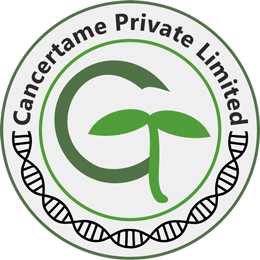[HIDE]
Contact Us
Other Articles
1. Cancertame Ayurvedic Formulation
2. What is Chemotherapy?
3. What is Radiotherapy?
4. Role of Ayurveda in Cancer Treatment
5. Genesis of Cancer
6. Early Detection of Cancer
7. Diet, Nutrition & Cancer
8. Tobacco Smoking & Cancer
9. Conventional Treatment of Cancer
10. Soft Tissue Sarcoma
11. Mesothelioma
12. Skin Cancer
13. Bone Cancer
14. Leukaemia
15. Chronic Lymphocytic Leukaemia (CLL)
16. Chronic Myelogenous Leukaemia (CML)
17. Acute Lymphocytic Leukaemia (ALL) & Acute Non-Lymphocytic Leukaemias (ANLL)
18. Acute Myelogenous Leukaemia (AML)
19. Lymphoma
20. Multiple Myeloma
21. Breast Cancer
22. Prostate Cancer
23. Oral Cancer (Carcinoma of the Cheek, Lips & Tongue)
24. Carcinoma of the Salivary Gland
25. Carcinoma of the Paranasal Sinus
26. Carcinoma of Pharynx (Oropharynx, Nasopharynx and Hypopharynx)
27. Carcinoma of the Larynx
28. Brain & Spinal Cord Tumours
29. Primary Tumours of the Brain
30. Metastases in the Brain
31. Carcinoma of the Oesophagus
32. Thyroid Cancer
33. Bronchogenic Carcinoma (Lung Cancer)
34. Secondary Cancers of the Lung
35. Carcinoma of the Stomach
36. Liver Cancer
37. Gallbladder & Biliary Tract Cancer
38. Pancreatic Cancer
39. Kidney Cancer (Renal Cell Carcinoma and Nephroblastoma)
40. Urinary Tract (Transitional Cell Carcinoma) & Bladder Cancer
41. Carcinoma of Colon & Rectum
42. Primary Tumours of the Testis
43. Ovarian Cancer (Stromal, Germ Cell and Krukenberg's Tumour)
44. Carcinoma of Uterus
45. Cervix Cancer
46. Paediatric Cancers
47. AIDS Related Cancers
48. Carcinoma of Unknown Primary Site (CUPS)
49. Role of Nutrition in Cancer Treatment
50. Chinese Medicine in Cancer Treatment
2. What is Chemotherapy?
3. What is Radiotherapy?
4. Role of Ayurveda in Cancer Treatment
5. Genesis of Cancer
6. Early Detection of Cancer
7. Diet, Nutrition & Cancer
8. Tobacco Smoking & Cancer
9. Conventional Treatment of Cancer
10. Soft Tissue Sarcoma
11. Mesothelioma
12. Skin Cancer
13. Bone Cancer
14. Leukaemia
15. Chronic Lymphocytic Leukaemia (CLL)
16. Chronic Myelogenous Leukaemia (CML)
17. Acute Lymphocytic Leukaemia (ALL) & Acute Non-Lymphocytic Leukaemias (ANLL)
18. Acute Myelogenous Leukaemia (AML)
19. Lymphoma
20. Multiple Myeloma
21. Breast Cancer
22. Prostate Cancer
23. Oral Cancer (Carcinoma of the Cheek, Lips & Tongue)
24. Carcinoma of the Salivary Gland
25. Carcinoma of the Paranasal Sinus
26. Carcinoma of Pharynx (Oropharynx, Nasopharynx and Hypopharynx)
27. Carcinoma of the Larynx
28. Brain & Spinal Cord Tumours
29. Primary Tumours of the Brain
30. Metastases in the Brain
31. Carcinoma of the Oesophagus
32. Thyroid Cancer
33. Bronchogenic Carcinoma (Lung Cancer)
34. Secondary Cancers of the Lung
35. Carcinoma of the Stomach
36. Liver Cancer
37. Gallbladder & Biliary Tract Cancer
38. Pancreatic Cancer
39. Kidney Cancer (Renal Cell Carcinoma and Nephroblastoma)
40. Urinary Tract (Transitional Cell Carcinoma) & Bladder Cancer
41. Carcinoma of Colon & Rectum
42. Primary Tumours of the Testis
43. Ovarian Cancer (Stromal, Germ Cell and Krukenberg's Tumour)
44. Carcinoma of Uterus
45. Cervix Cancer
46. Paediatric Cancers
47. AIDS Related Cancers
48. Carcinoma of Unknown Primary Site (CUPS)
49. Role of Nutrition in Cancer Treatment
50. Chinese Medicine in Cancer Treatment
Acute myelogenous leukaemia (AML) is also known as acute myelocytic leukaemia, acute myeloblastic leukaemia and acute granulocytic leukaemia. It originates in the myeloid stem cells and leads to overproduction of immature non-lymphoid cells known as the blast cells. AML usually occurs above 40 years of age but it may occur in young adults and children. Myelodysplastic syndrome is considered as the major risk factor. Symptoms of acute myelogenous leukaemia include fatigue, irritability, weakness, loss of appetite, loss of weight, bone & joint pains and flu-like symptoms such as high fever, chills and respiratory discomfort. There may occur purpura, menorrhagia and bleeding from the nose, gums & the gastrointestinal tract.
There is no definite staging system for acute myelogenous leukaemia. In untreated cases of acute myelogenous leukaemia, there are too many leukaemic cells in the bone marrow and peripheral blood. In the remission stage, counts of the white blood cells in the bone marrow and the peripheral blood return to normal after the treatment. In the relapsed stage, the acute myelogenous leukaemia recurs after a remission. In the refractory stage, the acute myelogenous leukaemia fails to go into remission even after the treatment. Procedures used in the diagnosis of the acute myelogenous leukaemia include complete blood count, bone marrow biopsy and cerebrospinal fluid examination. There is no definite staging system for acute myelogenous leukaemia. In untreated cases of acute myelogenous leukaemia, there are too many leukaemic cells in the bone marrow and peripheral blood. In the remission stage, counts of the white blood cells in the bone marrow and the peripheral blood return to normal after the treatment. In the relapsed stage, the acute myelogenous leukaemia recurs after a remission. In the refractory stage, the acute myelogenous leukaemia fails to go into remission even after the treatment. Procedures used in the diagnosis of the acute myelogenous leukaemia include complete blood count, bone marrow biopsy and cerebrospinal fluid examination.
Disclaimer:
This content is for information and educational purposes only and should not be perceived as medical advice. Please consult a certified medical or healthcare professional before making any decision regarding your health using the content above.
Click here to go back to the list of all Articles
Add New Comment
-
 Iris Diaz
Iris Diaz
Good afternoon, would you advise cancertame for a 10 years old girl diagnosed with acute myeloid leukemia due to flt3 mutation? thanks a million for your response, iris diaz Cancertame Private Limited
Cancertame Private Limited
Dear Iris Diaz, Cancertame should be taken in a recommended dose of 1 capsule, 3 times a day, 8 hours apart (1-1-1), in this particular case of Acute Myeloid Leukemia (AML), as a palliative treatment only. Cancertame usually takes about 3 months to arrest the further progression of cancer and thereafter starts regressing the activity of cancer and will help provide a prolonged quality life in this case. For any other information, you can write us back at support@cancertame.com Regards, Support Team
11 Sep 2020



Acute Myelogenous Leukaemia (AML)